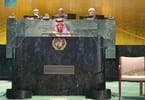Wheezing from the vog, budget committee members at the Hawaii Tourism Authority offices inside the Hawaii Convention Center voted for a $71 million budget, with $3 million extra in case of emergency.
The budget, which goes to a vote by the full tourism board in June, is roughly flat from the current fiscal year. It devotes more than two thirds of the money to tourism marketing, but slightly less than in the current budget.
Gov. Lingle’s tourism liaison Marsha Wienert, who was in the room for this, questioned the wisdom of flat marketing in a down economy. David Uchiyama of the HTA, says the agency has learned smarter ways to deploy funds.
Here are some points worth making as we consider the matter:
More money does not automatically equal more marketing. This assumes everybody in government spends money with equal wisdom, and nobody believes that, not even people in government.
There is objective evidence HTA is using its money wisely – like the idea of flying bloggers over to experience Hawaii and then blog about it — and targeting cities with direct air connections.
HTA marketing spending does not equal total marketing spending. That motorcoach that pulled into Costco parking lots on the West Coast disgorging hula dancers? Marriott paid for that.
It’s not clear that spending more is a practical option — hotel tax revenue is down sharply and the budget is ultimately based on a guess, which could be wrong, about how much revenue will be forthcoming from that tax.
Rival destinations spent heavily last fall and winter and have, in most cases, more serious money problems than we do.
But there is one more factor that may be more important than any of the others. There is a level of concern about finances, X, at which a consumer cannot be talked into a Hawaii vacation at any price. If a large number of Californians have gotten to X, you could spend eleventy zillion dollars and get zilch results.
I don’t know how many Californias are at X — nobody does — because people who have lost their jobs constitute only a subset of X. Most people at X got there simply by watching too much CNBC. You’ve got to assume that economic panic is widespread in California, where everyone is assaulted with daily reports on foreclosures, layoffs, and the “Pit and the Pendulem” fix the state government is in.
Nevertheless, there are probably a number of people in San Francisco and Los Angeles who meet these criteria:
They still have good jobs and do not expect to lose them.
They can afford Hawaii even in normal times.
They already know they like Hawaii.
These are people who have means, motive and opportunity to come to Hawaii, who are deterred by nothing more than reports about other people’s problems. They are, in brief, fraidycats. Radio and television commercials or free vacation contests might generate interest, especially since prices really are low right now.
WHAT TO TAKE AWAY FROM THIS ARTICLE:
- You've got to assume that economic panic is widespread in California, where everyone is assaulted with daily reports on foreclosures, layoffs, and the “Pit and the Pendulem” fix the state government is in.
- It's not clear that spending more is a practical option — hotel tax revenue is down sharply and the budget is ultimately based on a guess, which could be wrong, about how much revenue will be forthcoming from that tax.
- There is a level of concern about finances, X, at which a consumer cannot be talked into a Hawaii vacation at any price.






















